The fifth Feature Premiere for MLB The Show 22 was the hotly anticipated franchise mode and Road to the Show presentation from SDS. Last week’s commentary and presentation Feature Premiere was well regarded and heavy on details, and there was hope the same would ring true today. On top of that, franchise mode has been taking body blows from the community the last couple years, with it only intensifying when some key features (year-to-year saves and Sounds of the Show) were left in the past. We knew year-to-year saves would remain out for ’22, so today was more about restoring some faith in the longer term outlook for franchise and MtO.
Coming out of the Feature Premiere, is faith restored? I don’t think it is at this point, but I think it’s fair to say we got more than we expected today. It’s just less than we wanted considering that — like commentary — The Show had fallen so far back that there was a lot of catching up to do. That said, there’s plenty to cover so let’s get to it.
MLB The Show 22 Franchise Mode
First off, no “features” were promised in the build up to this premiere — franchise mode was not even on the Feature Premiere schedule originally — so it should shock no one that a lot of “under the hood” stuff did end up being the focus here. If you came in with outsized expectations, that’s just setting yourself up to be bummed out. This is not me saying franchise mode shouldn’t have received more, but this was not some bait and switch on the part of SDS.
Player Metric 2.0
The developers started off by saying that Player Metric is not what determined trade logic, which I took as them trying to tell the community not to “hate” something they implemented just last year and blame it on the other parts of franchise mode that were lacking in logic. This was probably done because clearly SDS believes in this Player Metric concept and added to it this cycle. On top of that, it was SDS admitting that they know their trade logic was a hot mess last year.
In general, Player Metric seems to be best described as the importance of X player to your team both in the present and future. It does not seem to go as deep as something more intangible like what X player means to the clubhouse, but it’s more like “how good is X player, and do we have any player that can do what he can do in the organization?”
As an example, Gleyber Torres was used as how much more the Player Metric can fluctuate within franchise mode now. In this example, Torres went from being very important coming into a season, but by the end of the year the Yankees had traded for another 2B (in part because Torres had a terrible year). By the offseason, the Yankees deemed Torres not worth his contract and he was DFA’d. This is perhaps a more extreme example, but the point is to showcase the multiple ways a player starts to mean less to an organization.
However, SDS did also point out that one year was being weighted too much in this metric (and that’s very true), so they have gone to a model that is weighted on a three-year cycle of stats (much like they do for rating players overall anyway so it just makes logical sense). On top of that, this also means some of your depth pieces at AAA will matter more now because, again, it seems the implication is that the team is more aware of the weaknesses and strengths within the totality of the organization.
Roster Logic Improvements
I want to skip ahead now in the Feature Premiere to roster logic because Player Metric seems to be what’s going to be the reason AI organizations do not sabotage themselves (assuming it works as intended). With Player Metric now weighting three-year stat totals and taking a wider look at the organization overall, the priorities of the AI teams should improve both in-season and during the offseason.
So if an organization is light on starting pitching, the organization should be less likely to leave a middling SP prospect unprotected in the Rule 5 draft. The same should apply to your 40-man roster overall and probably deciding between those last couple spots for players you might need just to get through the next season. The discussion around arbitration also applies here as I presume teams will be less likely to just DFA a player who is an important (but average) depth piece.
However, to use a Moneyball comparison, Player Metric seems to be something that is working in a Billy Beane sense of things rather than an Art Howe sense of things — at least how it was described. Your overall organization is going to be improved, but it doesn’t necessarily mean these players will always be used right. Nothing was called out that relates to lineup construction or bullpen logic. In other words, AI managers might still be going rogue and making a lot of boneheaded plays while AI GMs are bangin’ and clangin’ in the weight room.
Trade Logic Improvements
That said, yes, trade logic was a straight up disaster last year. SDS more or less again admitted that by showing off a Juan Soto trade here for MLB The Show 22 since Soto was someone who was turned into a meme by the community because of how easy he was to snag from the Nationals in ’21. In this example, Soto was traded to the Yankees for two of the best five prospects in all of baseball. Would that be enough? I don’t know, but considering Soto would need a new contract and so forth, it’s probably in the ballpark.
This also brings to the table the weaknesses that still are going to exist in this system even if the logic is presumably improved.
- There are no three-team trades
- There are no cash considerations
- There is no way to add more than three players to one side of the ledger
In other words, finding “fair value” is tricky because the more you expand the system to include more players/cash, the more the opportunity arises to screw the AI. However, the more limited it is, the more you can still end up with unfair trades because being constricted to 3-for-1 deals as the most you can do still creates gaps. Regardless, considering the fact that logic improvements were boasted about last year means I would not even take a “trust but verify” approach here. Instead, I would take a “hope but verify” approach and dig in once you get the game. We’re not expecting perfection, we just don’t want to see one-sided deals left and right.
More components tying into this logic deal directly with the type of team you are. Contenders and rebuilding teams were tweaked again, so now actual contenders should be more likely to give up a bit more around the deadline to get that one last piece, while rebuilding teams are going to be less eager to give up players on long-term deals. In addition, rebuilding teams will give up players who will soon be free agents (on top of still looking for prospects overall).
Relief pitchers and closers getting their fair shake is another crucial change here because they simply were not respected in trades or in free agency. Teams now can put those players on the block and chase them, and they’ll be an important part of the mix in trades it seems. Another noted tweak was that a big free agent signing won’t just get immediately moved the next season, which just makes sense.
Free Agency/Offseason Improvements
Beyond the aforementioned roster logic improvements that will also help out here, there was a general focus on making the free agency period more “realistic” in comparison to the real MLB. This starts with max contracts now being able to go to 15 years and have an AAV (average annual value) of $35M. Players will be more realistic in their expectations, and this means they’ll know their value if they’re coming off a great year (or string of great years) or sort of looking for that smaller contract to rebuild their value after a down year. This also means high-end relievers should no longer sign for peanuts.
However, the biggest change here (to me) seems to be that the free agent pool will no longer be littered with players as we go deeper into franchise mode. Teams ran out of money, and the progression system was messed up in such ways where free agents just started lingering out there. We did not get a lot on how progression was improved, so I’m going to assume it’s still not in a great spot — especially as it relates to older players falling off a cliff — but teams should have funds to sign guys at least.
This in part is happening because the whole organization is not taking up your budget now, just the 40-man roster (which is more true to real life). The CBT is basically the luxury tax, and SDS wanted to call out that it’s accurate (which is cool), but the bigger point is that teams should have more funds for players now. The market sizes were also updated, which should play into these pools of funds.
On top of that, free agency is still going to be more dynamic now because not all the top players are going to sign right in this frenzy at the start of the offseason. The lockout warped our perception a bit this year, but in general, MLB free agency has been slow going at times. So while players are certainly going to sign, players are not just going to settle out of the box. They will still end up on teams before the season begins, but you’ll need to do some risk-reward planning if you really want to wait out a player and see if he finally caves before the season starts.
Miscellaneous Improvements
With Ohtani being on the cover, two-way player improvements had to be discussed. The key part for Ohtani is that he will recover pitcher stamina even if he plays DH or is out in the field on the days he’s not pitching. In addition, other players can have secondary two-way positions now, and if teams believe X player is the right person to be on the mound one day and then in the field the next, they will be out there.
When it comes to playoffs, four-man rotations will be a thing, and “workhorse” sorts of pitchers will now be able to effectively go out there in the playoffs and go on short rest. We did see a six-man rotation depth chart screen at one point, but since SDS did not talk about it, I assume it’s just there for spring training rather than the regular season.
Again, not much was said about progression on a broader scale (or the draft), but SDS did say from A ball all the way to MLB, there will be no more fake players. This means everyone in your organization should be either a current real minor league player or real MLB player. In addition, more effort was put into the top 150 prospects, their ages were made accurate this time around, and those players should be more respected both from a trade and progression standpoint.
Lastly, there is now a separate slider for injuries in played games vs. simulated games. On top of that, the transaction log now will be available for the entire season so you can go back to April and look at what transactions went down even when you’re now in September.
MLB The Show 22 March To October
At the outset, I want to point out that it does feel like there’s a weird divergence beginning to occur here between MtO and franchise mode, but I do hope it ultimately ends up in a convergence of sorts. With March to October now going with a multi-season approach, this is no longer a more presentation-heavy season mode where you just play some of the games. It’s now just becoming another franchise mode. However, the franchise mode we already have isn’t great, so it’s obviously a bit weird to have another version of the mode.
I am not someone saying to stop creating either franchise mode or March to October, but it does seem in SDS’ best interest to make these two modes as good as they can be, and it certainly seems like that probably means they should be one and the same. You obviously want to be able to play all 162 games still (if you want) in this scenario, but I’m at that point where I want my franchise mode depth but also like this deeper form of free agency now coming to MtO — and would rather not have to play every inning of every game.
In short, the free agency system being added to MtO this year looks really cool, but it sure would be nice if I could have access to it in franchise mode as well.
Free Agency Overhaul
So how this free agency system is going to work is based on how you set your priorities and then react to the changing marketplace. You have three general priority buckets, and from there you’ll set a couple “needs” either in the form of positional needs or general needs for certain types of players. Depending on the needs an priorities you set (you’re limited to just a couple for each of these buckets), you will get an initial boost with any players who fit those buckets.
This system will then play out over days and weeks as you hunt for acquisitions and engage in the rumor mill and last-ditch efforts to go for players. It has aspects of the old recruiting system from NCAA Football in that you can really try to focus in on certain players, but you’re not guaranteed to get them even if they’re your top priority. Meanwhile, while you were trying to lure this one particular player, a whole bunch of other guys might be coming off the board.
In addition, there is an even more “game-like” aspect where you have one “last chance” per offseason to try and sign a player on your big board. This event occurs when a player is about to sign elsewhere. You will have to go well above market value and make your pitch. This does not guarantee he will sign, but it does guarantee you will be able to make the best offer if you choose to do it.
On top of that, the top free agents have a nice little anticipatory presentation aspect to them now where MtO basically steals the Diamond Dynasty diamond player walkouts and uses them when someone on your big board signs. It may or may not be your team who gets the player, but it’s cool to see this moment in the game so you can react with joy or sadness in the moment.
There’s a couple more smaller components here, but the point is that free agency is the biggest change to March to October this year. Other smaller changes include your ability to now be able to edit your jerseys and stadium. However, you still can’t go into MtO with a custom roster, which again showcases some of these weird split points being created between franchise and MtO.
Bottom Line
I think it’s fair to say SDS delivered more than most reasonable people expected. There’s no online franchise, custom draft classes, overhauled progression system, story elements, an expanded draft and so on, but it’s not nothing either. SDS does need to start adding big things to this area of the game, but we also need to see if MtO and franchise are going to continue to be these separate modes, or if perhaps we’re moving towards a system where both morph into one general all-purpose mode. If everything revealed today had been applicable to both MtO and franchise mode, it still probably would not have been enough to please everyone, but it would have been much closer to doing so. In either case, SDS has added developers to the franchise/MtO team, and there was clearly more commitment to the mode(s) this year than last year.



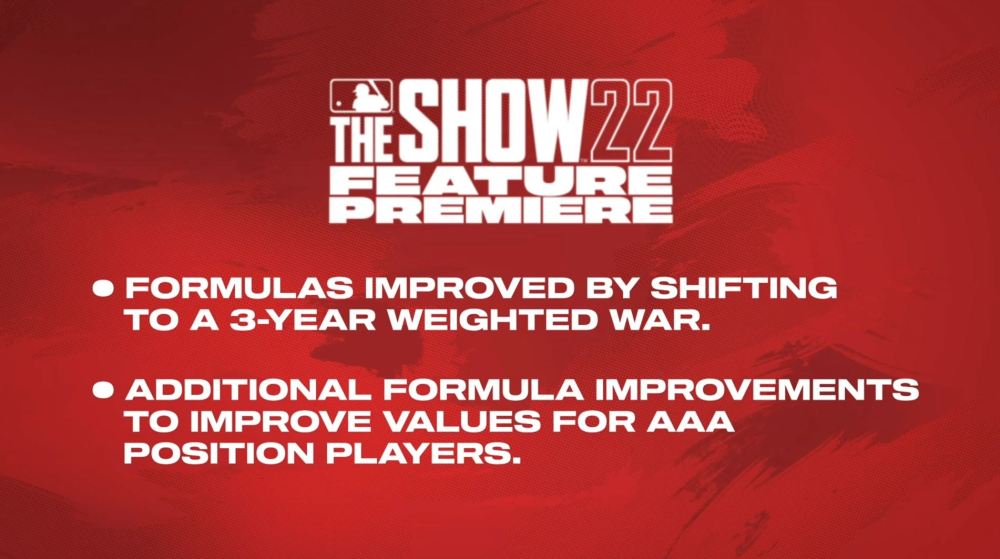
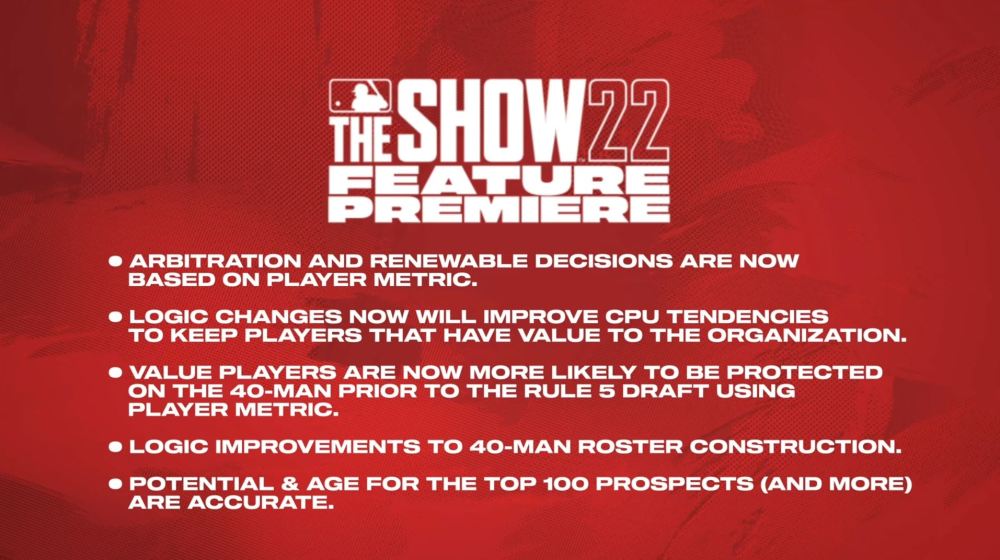
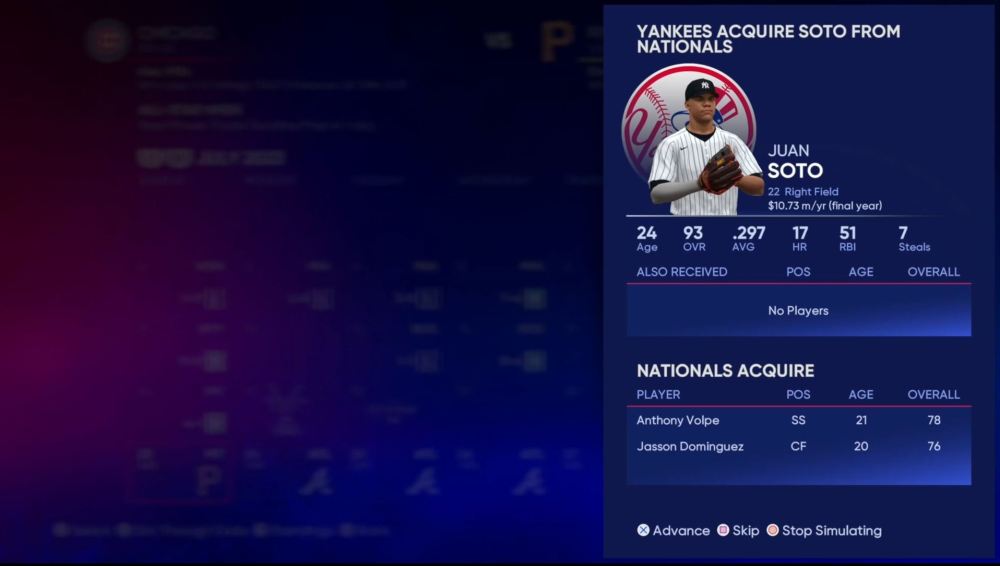
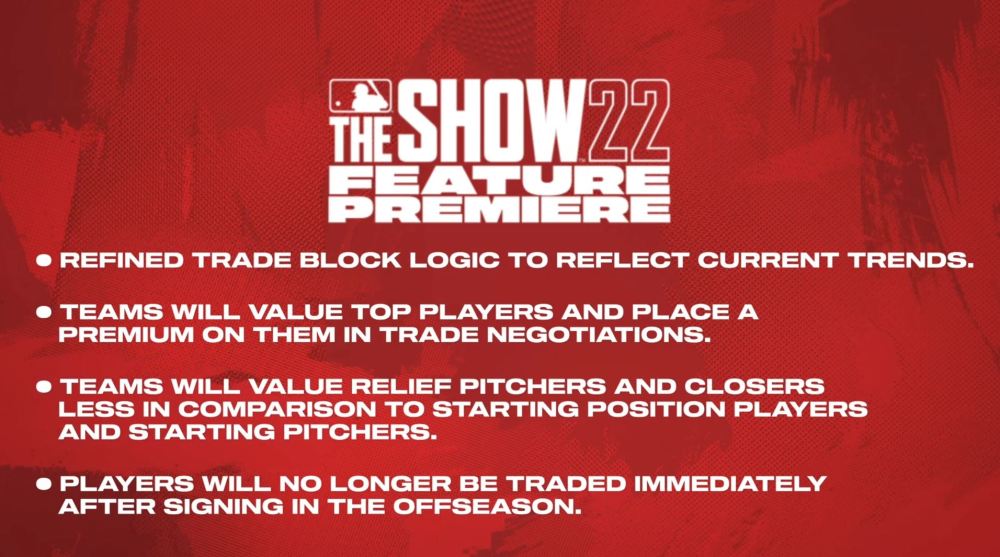

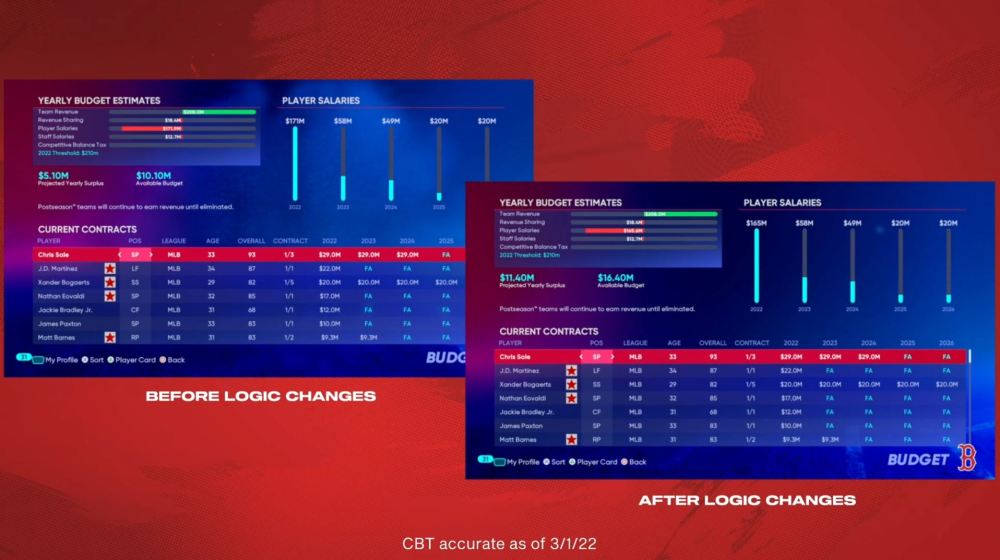
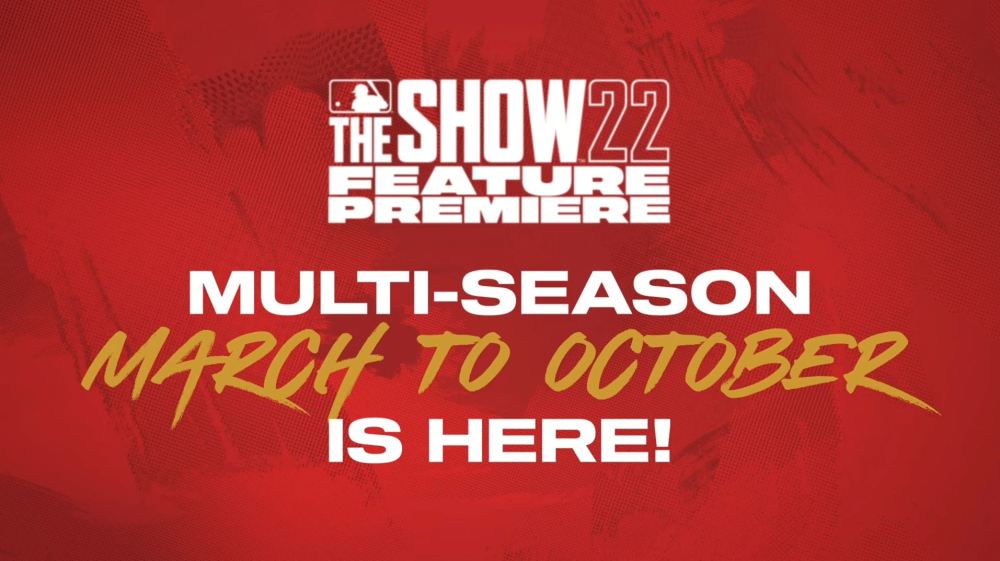
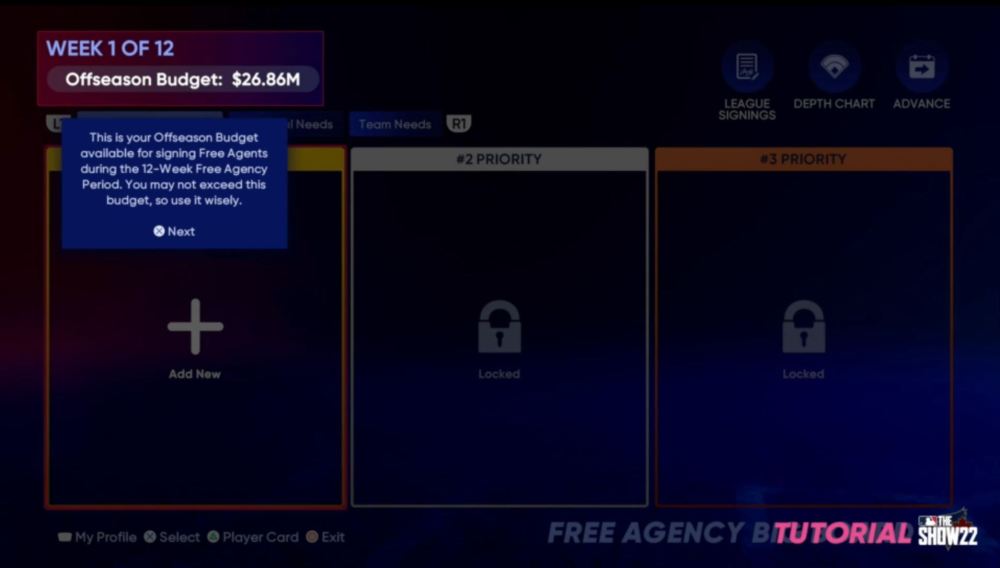
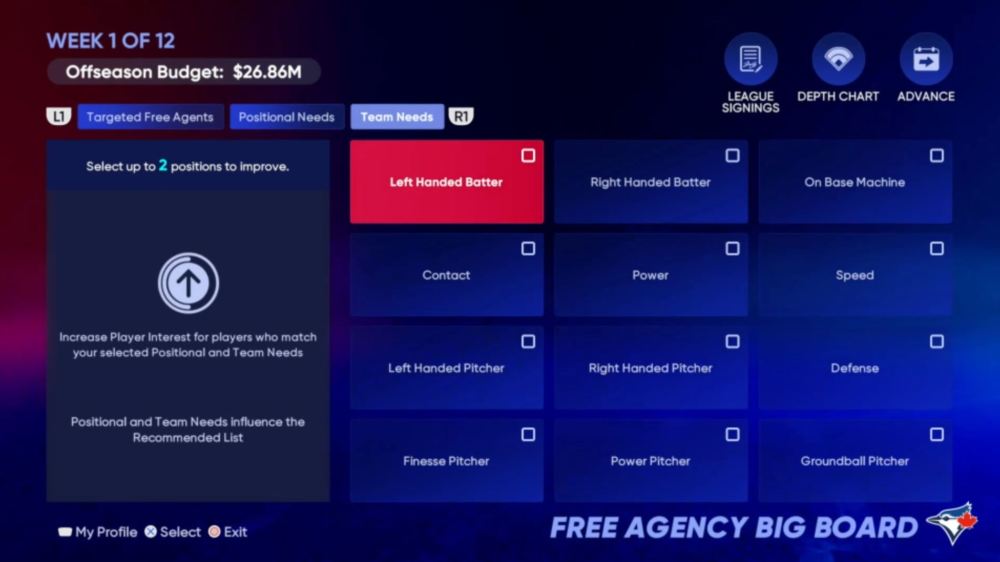
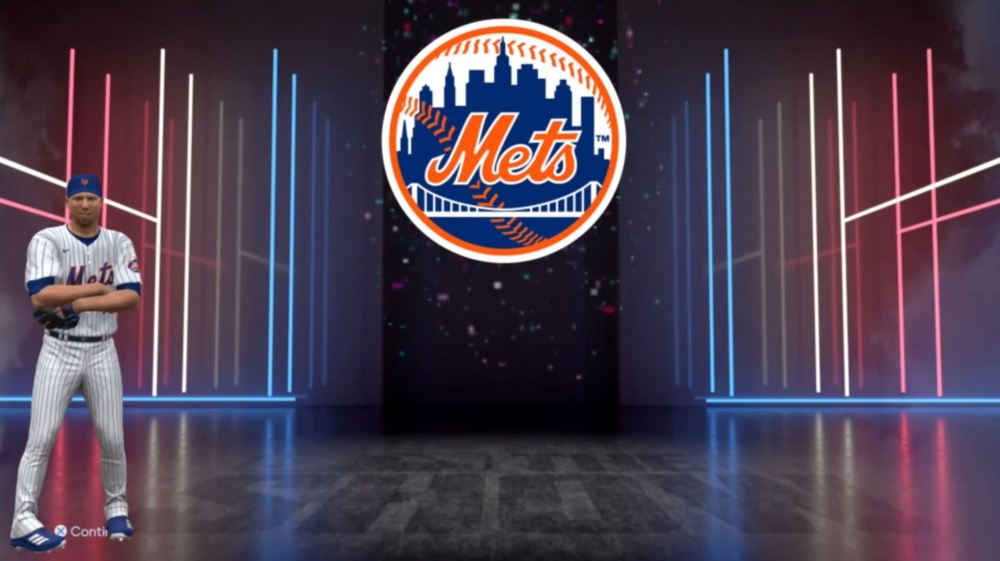





Published: Mar 17, 2022 08:45 pm